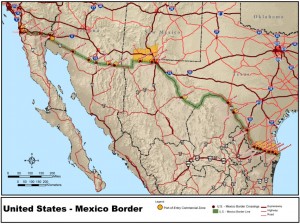United Nations calling for answers from Washington over “racist nature” of U.S.-Mexico border wall
|
By Marta del Vado
The UN Committee on the Elimination of Racial Discrimination expresses their concern to Washington regarding the potential “discriminatory impact” of the construction of the US-Mexico fence on indigenous communities living on both sides of the border. The chairperson of the UN Committee on the Elimination of Racial Discrimination, Alexei Avtonomov, confirmed in a letter submitted in March 2013 that, according to several complaints received by different NGO organizations, the US-Mexico wall has been built, for the most part, in areas inhabited by indigenous communities. This construction “harms their lands, ecosystems, and their cultural lives and traditions, including their access to tribal lands located north and south of the border and to resources required for traditional ceremonies.”However the wall has not been built in more prosperous and wealthy areas, like the Golf River Bend resort, on the Texas border. Mr. Avtonomov warns that this selective construction discriminates against indigenous communities and Latin migrants with lowest resources. The complaint against the “racist nature of the wall,” has been presented by several ethnic Indian activists of the Lipan Apache community together with the Faculty of Law of the University of Texas, to the United Nations (in 2012) and to the Inter-American Commission on Human Rights (in 2008).
